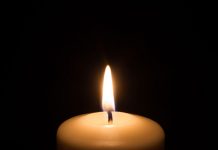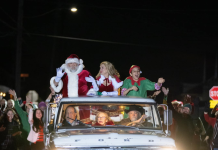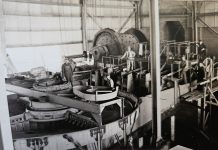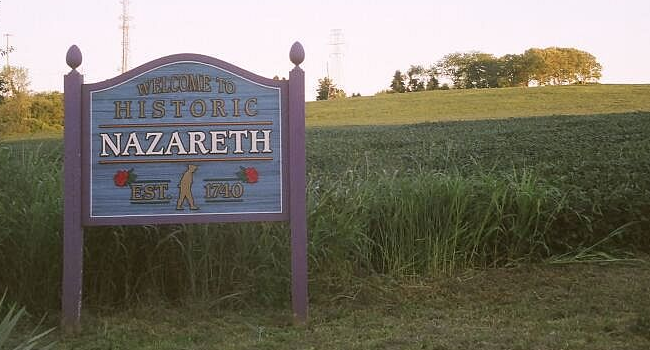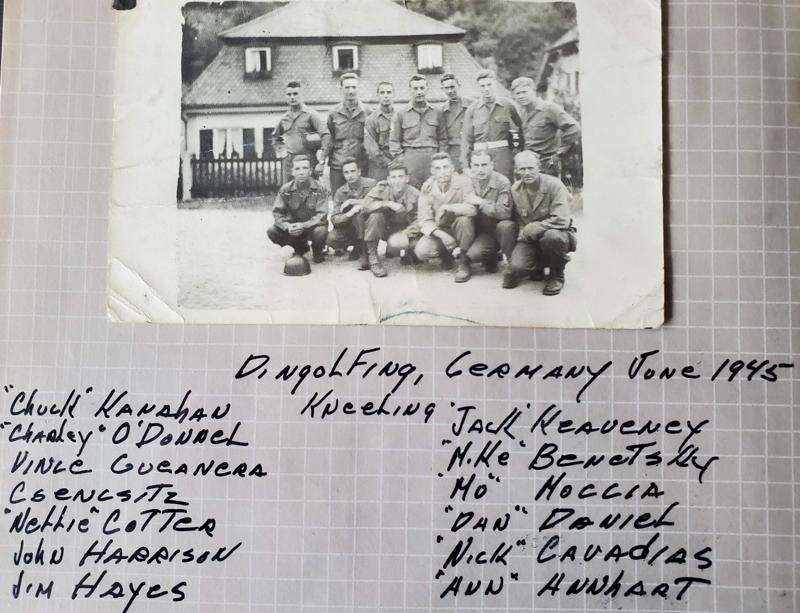
In today’s column, we continue our march with S.Sgt. Frank Csencsitz, of Northampton, with Lt. Gen. George Patton’s Third Army, from Normandy to Germany. These events were listed in a daily log written by Capt. L.L. Capron, Third Army. Their march started in Normandy through many towns and cities: St. Lo, Chartres, Marne River, Reims, Verdun, Metz, Luxembourg, Saarlautern, Frankfurt, Hagen, Schweinfurt, Winterburg, to list a few.
From June 15, when his unit landed in Normandy, they faced combat in some cases for days until an area was cleared of Germany.
In December 1944, they were in Luxembourg. In Medernach, Luxembourg, they faced continual shelling, engaged the enemy and cleared the area. In January, S.Sgt. Csencsitz would react rapidly to save his comrades.
Capt. Capron writes in the log, “Intermittent shelling, caliber (heavy) causing casualties. Pvt. Griffith wounded, placed call, left positions at Ermsdorf to take positions at Gilsdorf. Shell burst. Pfc. Longway killed. Pawsuslos broken leg. Cpl. Watts severely wounded head and body. Pfc. Sipe left leg broken. Griffith Montevano, Skowroneek severe body wounds. Pvt. Temple wounds to face and leg.
“S.Sgt. Csencsitz after Pvt. Griffith’s call on platoon hot lop found Cpl. Watts, finds Griffith, Skowronek, Montevano severely wounded in MG pit. Placed Griffith in rear of Jeep, put Montevano on front, Lt. Forman to support him, evacuate to 5th Med collecting station. Medernach shelling continuing Csencsitz returns to evac. Cpl. Watts, Pvt. Skowronek from MG pit in Jeep to collection. Capt. Capon helps evac Longway, Pfc. Sipe and Sqd Pawasauskas.”
S.Sgt. Csencsitz shows great courage in rescuing his fellow soldiers. All this was done under intense shelling. It is hard to imagine driving a Jeep with wounded men to safety, with shells bursting around you! S.Sgt. Frank Csencsitz would be awarded the Bronze Star with Oak Cluster for his heroic action.
The fighting continued in Luxembourg. In reading the unit log, Capt. Capron and Lt. Neill were constantly going on recon missions very close to German lines, so they could alert their units on enemy movements and gun emplacements. In one of their recons, Lt. Neil suffered a broken collar bone, wrist and possible other injuries.
Soon, another Northampton boy joined the unit. Sgt. Mike Benetsky, wounded in earlier action, was awarded a Purple Heart. He also was awarded the Bronze Star Medal with Oak Leaf Cluster for his actions.
In March, the unit crossed the border and entered Germany, with a mission to defend bridge at Messerich. While defending the bridge, a strange aircraft bombed the bridge. It flew faster than anything they ever saw. What was it? A ME262, the first jet propelled aircraft appeared late in 1944, too late for the Germans to gain control of the air.
Speed max was 560 per hour. Germany was only able to build 1,430 planes. Many built with slave labor in underground bunkers.
The few ME109s, 190s continue to bomb the unit until the closing months of the war. Page after page of the unit log listed air attacks on unit positions.
“On March 26, Miller, Weisman, Slavot attended Jewish Passover services. Army chaplains provided religious services for all faith during the platoon’s long march to Germany, comforting the wounded and dying.
“By March 29, the unit cleared the suburbs of Frankfort and ended German resistance, taking control of the bridges and airport.”
April 1: “German soldiers in civilian clothes surrendered, 53 prisoners. As we moved through Germany, there was a constant flow of German soldiers surrendering. They realized the war would soon end.”
In two weeks: “Mit Hitler Im Westen.”

